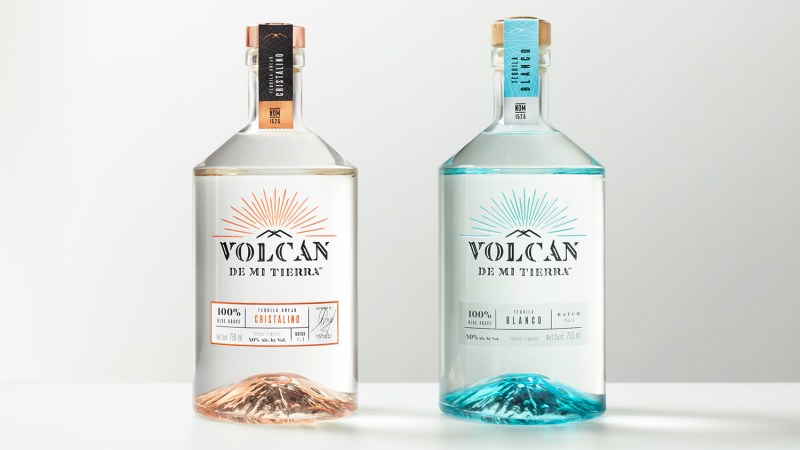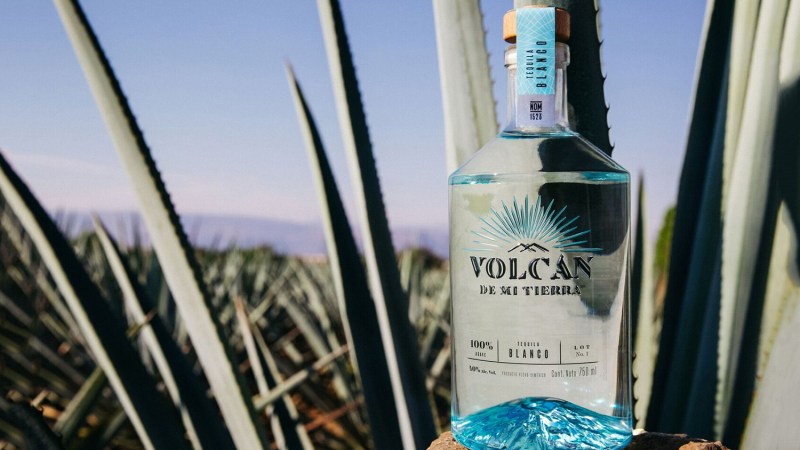When you hear the name Moët Hennessy, you think of luxury French cognac. Or the Moët Hennessy brand of upscale vodka, Belvedere. Or Champagnes like Moët & Chandon or Dom Pérignon.
What you don’t think of, probably, is tequila.
Until now, that is. The massive Moët Hennessy Louis Vuitton conglomerate is nearing the release of its first-ever tequila, made in partnership with the Gallardo family, who has strong roots in the region around Tequila, Jalisco, in Mexico. This “land of volcano” tequila, Volcan De Mi Tierra, will have two expressions: Blanco and Cristalino.
Oh, and did we mention it’s made from volcanic soil?

The distillery for Volcan De Mi Tierra sits in the lowlands at the foot of a volcano appropriately named Tequila, which erupted 200,000 years ago but continues to fertilize the land for prime agriculture. Here, blue agave is grown and used to produce the Blanco and Cristalino, thanks to the expertise of Anna María Romero Mena, the mastermind behind this new Moët Hennessy label. Romero Mena experimented with yeast variations, agave selections, and multiple cask maturations to hit the final tones for the 100-percent blue agave Volcan De Mi Tierra, pulling from the rich soil and history of this volcanic land.
“While super premium tequila has been exploding for nearly a decade, there is still much more room for growth in regards to quality product,” says Trent Fraser, president and CEO of Volcan De Mi Tierra.
To no great surprise, both the Blanco and Cristalino are smooth and sweet — but despite their similar appearance, they couldn’t taste more different. The Blanco (Spanish for “white”) — a common strain of unaged or mildly aged tequila that results in a clear-colored spirit — brings an unmistakable fruity sweetness with notes of citrus, pear, and tart cherry. An herbal base keeps the taste grounded and saves it from veering too far nectarous. To top off the profile, a dash of spiciness lingers slightly in your throat, without any burning you might find (and be deterred by) in other tequilas. We would take this baby straight up, on the rocks, or in a shot.

The Cristalino (“crystalline”) is a different beast. Cristalino has been called the newest breed of tequila, and the Tequila Regulatory Council (CRT) is expected to formally recognize this sub-sect come 2018.
But what exactly is it? In its simplest form, it’s a clear Añejo (“aged”) tequila.
Cristalino is aged as long as an Añejo, then filtered to strip the liquor of its oak coloring. Romero Mena’s complex process includes blending both Extra Añejo (“extra aged”) and Añejo tequilas, then aging the hybrid once again. The resulting elixir fills your mouth with bold flavors without being too heavy or syrupy. The sweetness of Cristalino comes from vanilla, caramel, and some chocolate notes, which confuses the senses, seeing as how the tequila is clear with a tinge of yellow-green coloring. As far as cocktails go, this Cristalino will produce the best margarita you’ve tasted yet.


